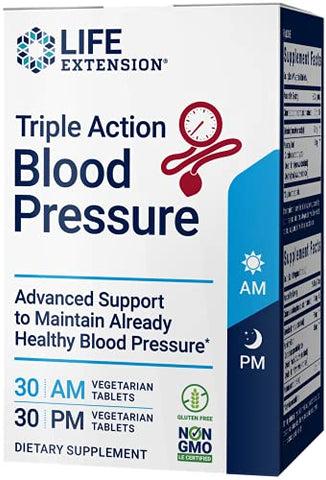
For several reasons, a plant-based lifestyle is better for your body. It is lower in sodium, saturated and refined fats. It has fewer calories and more fibre. It is also better for your heart. A lower blood pressure can reduce your risk of developing heart disease. You may find that a vegetarian diet is the right choice if you have high levels of blood pressure.
Plant-based diets are lower on saturated fats and salt.
Vegetarian diets tend to be low in saturated fats. They have fewer calories and lower dietary cholesterol. They also contain a wide variety of vitamins and minerals. Plant-based diets are high in fiber and low in calories. They are also lower in sodium and refined sugars than a standard American diet.
Vegetarian diets are lower in saturated fat than the standard American diet. You can reduce your consumption of meat and milk depending on your blood sugar level by substituting more plant-based protein. It is possible to replace butter with natural peanut oil or butter for toast, which will reduce the amount of saturated fats. Vegetarians also have fewer trans fats than those in fried foods, baked goods, or fast food.

They have lower calories
In a recent study, researchers found that the diet of vegetarians was linked with lower blood pressure than that of omnivores. The vegetarian diet was also associated with lower BMI and lower BPs. Study results showed that vegetarians were more likely to lower blood pressure than those who eat meat or fish. There are limitations to this study. It was conducted in large cohorts and other factors had to be considered.
One of the biggest differences between vegetarians versus meat-eaters, is that vegetarians have lower blood pressure than those who eat meat. Vegetarians have higher intakes of multinutrient fruits and vegetables as well as lower calories. Besides this, a vegetarian diet avoids the consumption of dairy products, eggs, and fish. A vegetarian diet is lower in calories for high blood pressure than meat, fish, and poultry.
They are richer in fibre
There are many benefits to fiber in plants and other foods. Fiber can help you digest food, which is especially important for those with high blood pressure. However, fiber intake can cause side effects. Gas, bloating and general abdominal discomfort are the most common side effects of fiber intake. Humans can tolerate high amounts of fiber. Increase your fiber intake while drinking plenty of fluids to minimize side effects.
They are lower in sodium
It is possible that vegetarians have lower blood pressures than non-vegetarians. However, the reasons for this are unknown. Blood pressure is directly affected by the rate at which our hearts beat. Consuming high amounts of sodium can lead to an increase in blood pressure. Consuming high-fat and high-sodium meals can increase blood pressure long-term. A vegetarian diet contains low sodium and is beneficial for both short-term and long-term health.

A cohort study of hypertension sufferers found that those eating vegetarians had 34% fewer symptoms than those who did not. Another study found that vegetarians were at lower risk of hypertension, both in systolic as well as diastolic measurements. In both studies, lower levels of sodium or potassium were linked to a decrease in bloodpressure.
FAQ
Is it possible to have a weak immune system due to being cold?
Being cold gives you a weaker immune system because when you are cold, your body produces less white blood cells which fight infections. Cold can also make you feel better as your brain releases endorphins, which reduce pain.
What's the problem with BMI?
BMI stands For Body Mass Index. It is a measurement of body mass based on height and/or weight. Here is how to calculate BMI using the following formula.
The weight of a kilogram divided by its squared height in meters.
The result is expressed using a number from 1 to 25. Scores of 18.5 and higher indicate overweight, while scores of 23 and higher indicate obesity.
A person who weighs 100 kg and has a height of 1.75 m will have a BMI of 22.
What are 10 healthy habits you can adopt?
-
Get breakfast every morning.
-
Don't skip meals.
-
Eat a balanced, healthy diet.
-
Drink lots of water.
-
Take care of yourself.
-
Get enough sleep.
-
Stay away from junk food.
-
Do some exercise every day.
-
Have fun
-
Make new friends
Statistics
- WHO recommends consuming less than 5% of total energy intake for additional health benefits. (who.int)
- In both adults and children, the intake of free sugars should be reduced to less than 10% of total energy intake. (who.int)
- The Dietary Guidelines for Americans recommend keeping added sugar intake below 10% of your daily calorie intake, while the World Health Organization recommends slashing added sugars to 5% or less of your daily calories for optimal health (59Trusted (healthline.com)
- According to the Physical Activity Guidelines for Americans, we should strive for at least 150 minutes of moderate intensity activity each week (54Trusted Source Smoking, harmful use of drugs, and alcohol abuse can all seriously negatively affect your health. (healthline.com)
External Links
How To
What does "vitamin" actually mean?
Vitamins are organic compounds found naturally in food. Vitamins help us absorb nutrients in the foods we consume. Vitamins are not made by the body, so they must be obtained through food.
There are two types of vitamins: water soluble and fat soluble. Water-soluble vitamins dissolve easily when they are dissolved in water. These include vitamin C (thiamine), Vitamin B1 (riboflavin), Vitamin B2 (riboflavin), Vitamin B3 (niacin), Vitamin B6 (pyridoxine), Vitamin C, B1 (thiamine), Vitamin B2 (riboflavin), Vitamin B3 (niacin), and Vitamin B6 (pyridoxine). The liver and fat soluble vitamins are stored in fatty tissue. Vitamin D, E, K and A are some examples.
Vitamins can be classified according to biological activity. There are eight main groups of vitamins.
-
A - essential for normal growth and maintenance of health.
-
C - vital for nerve function and energy generation
-
D – Essential for healthy teeth, bones and joints
-
E is required for good vision and reproduction.
-
K – Required for healthy muscles & nerves.
-
P – vital for building strong bones.
-
Q - aids digestion and absorption of iron.
-
R - Required for red blood cell production
The recommended daily allowance of vitamins (RDA), varies depending upon age, gender, physical condition, and other factors. The U.S. Food and Drug Administration (FDA) sets the RDA values.
For adults 19 years and over, the RDA vitamin A intake is 400mg/day. For fetal development, pregnant women require 600 micrograms per daily. Children ages 1-8 require 900 micrograms per day. Children under 1 year old require 700 micrograms daily, while infants over one year old need 500 micrograms every day. This decreases between 9 and 12 months.
Children aged 1-18 require 800 micrograms of sugar per day, while those who weigh more than 1200 need 1000. For their nutritional needs, underweight children need 1200 mg per day.
Children aged 4-8 who have anemia are required to consume 2200 micrograms of Vitamin C daily.
2000 micrograms is the minimum daily intake for general health in adults older than 50 years. Because of their higher nutrient needs, women who are pregnant or nursing need 3000 mg per day.
Adults over 70 years of age need 1500 micrograms per day since they lose about 10% of their muscle mass each decade.
Women who have been pregnant or are lactating require more than the RDA. Pregnant and breastfeeding women require 4000 micrograms each day during pregnancy and 2500 Micrograms each day after birth. Breastfeeding mothers need 5000 mg per day when breastmilk is being produced.